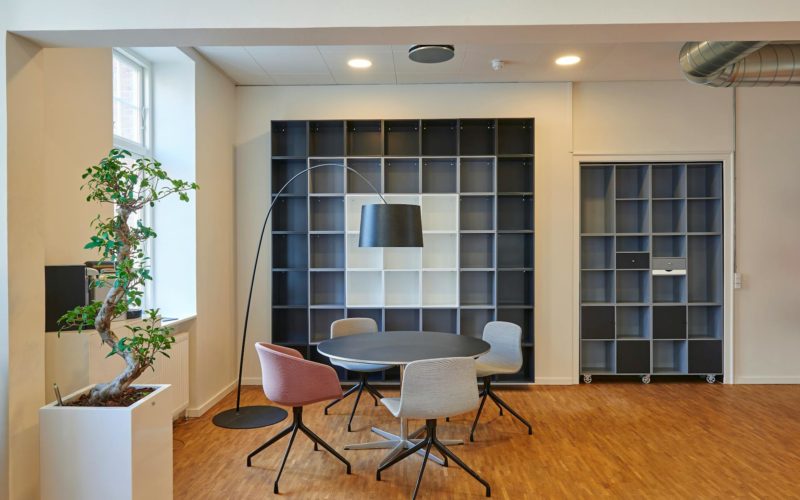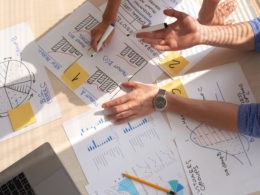The design of a workplace can have a great effect on the efficiency and morale of employees. Think about it; wouldn’t you be excited to come to work every day when your workplace has comfy chairs, modern technology and everything that makes working enjoyable?
A thoughtfully designed office doesn’t just look good; it can improve productivity, focus, and even creativity. Therefore, modernising your office isn’t just a luxury; it’s a necessity. Whether you’re upgrading an existing space or starting from scratch, creating a productive and modern office can boost both employee satisfaction and leave a lasting positive impression on clients and stakeholders. Here’s how you can achieve this with a few key changes.
1. Create a Plan and Consult Experts
Before diving into any revamp, it’s crucial to start with a well-thought-out plan. This helps you stay focused on your goals and ensures that any changes you make align with your business’s needs. Start by identifying areas that need improvement—whether it’s better functionality, updated aesthetics, or both.
Once you’ve outlined your goals, it’s a good idea to work with an office fit-out company that specialises in designing modern commercial spaces. These experts understand how to maximise space while making it both functional and aesthetically pleasing. An experienced and credible office fit out company will guide you through everything from layout designs to selecting furniture that complements your office style and brand.
2. Focus on Lighting for Better Productivity
Lighting plays a critical role in shaping the work environment. Poor lighting can lead to eye strain, headaches, and fatigue, which reduce productivity and morale. On the flip side, proper lighting can energise employees and create an inviting workspace.
Where possible, maximise natural light in the office by positioning workstations near windows or using glass partitions. Natural light not only boosts mood but also reduces the need for artificial lighting, lowering energy costs – so it’s a win-win situation. For areas with limited sunlight, opt for energy-efficient LED lights that mimic daylight. Installing adjustable lighting can allow employees to customise brightness to their preferences, creating a comfortable and productive environment.
3. Incorporate Ergonomic Furniture
Employee comfort is directly tied to productivity. Poorly designed furniture can lead to physical strain, back pain, and exhaustion, all of which impact job performance. Investing in ergonomic furniture can solve this issue and improve employee well-being.
Ergonomic chairs with lumbar support, height-adjustable desks, and keyboard trays help employees maintain proper posture, preventing long-term injuries and discomfort. Standing desks have also become a popular addition in modern offices, allowing employees to stand whenever they feel they’ve been sitting for too long. This improves circulation and reduces fatigue.
4. Designate Collaborative Spaces
In the age of collaboration and teamwork, having designated spaces for group discussions and brainstorming sessions is essential. While open-plan offices encourage interaction, dedicated collaborative areas allow teams to work together without distracting others.
Create informal breakout areas with comfortable seating where employees can gather for quick discussions or relaxed brainstorming sessions. For more formal meetings, invest in well-equipped conference rooms with video conferencing tools, interactive whiteboards, and projectors. These spaces allow employees to share ideas easily and collaborate more effectively, boosting overall productivity.
5. Integrate Modern Technology
Technology is the backbone of a modern workplace. Keeping your office up to date with the latest tech makes day-to-day tasks easier, while also helping employees stay connected and efficient.
Ensure the office has high-speed internet, sufficient outlets for devices, and wireless charging stations to support a tech-driven environment. Additionally, video conferencing tools, cloud-based software, and smart projectors are prime requirements for remote work, communication, and presentations. The right technology infrastructure allows for seamless operations and makes collaboration both within and outside the office easier.
6. Add Natural Elements for a Calm Ambiance
Bringing elements of nature into your office design can greatly enhance the atmosphere and contribute to a calm, stress-free environment. Studies have shown that incorporating natural elements such as plants, natural wood, and organic textures can reduce stress and increase overall employee well-being. Consider adding low-maintenance plants throughout the office, particularly in common areas and on individual desks. You can also introduce natural materials like wood, stone, or bamboo for furniture and accent pieces.
7. Create Private Areas for Focused Work
While collaborative spaces are necessary, private areas where employees can work without distractions are just as important. Open offices can often be noisy and filled with interruptions, making it difficult for employees to focus on tasks that require concentration. Creating private spaces or quiet zones allows employees to escape distractions and engage in deep work.
These private areas can be designed as small rooms or soundproof booths with comfortable seating and the necessary tools for focused work. You can also consider introducing noise-cancelling features such as soundproof panels, soft carpets, or acoustic wall treatments to minimise distractions. Having a balance between collaboration areas and quiet zones ensures that employees have the flexibility to work in the environment that best suits their tasks.
8. Showcase Your Brand Identity
When clients, partners, or potential hires walk into your office, they should immediately get a sense of your brand identity. Incorporating elements that highlight your brand can foster a stronger connection between the business and its employees and leave a lasting impression on visitors. This can be achieved through thoughtful use of colour schemes, logos, and artwork that align with your brand’s identity. For example, if your company focuses on sustainability, you might integrate eco-friendly materials and energy-efficient features into the design. If creativity is at the core of your business, vibrant colours and artistic décor can help convey that message.
9. Promote Wellness with a Relaxation Space
Promoting wellness in the workplace goes beyond physical health; it also includes mental well-being. In today’s fast-paced work environment, offices must have a dedicated space where employees can relax, recharge, and take a break. A relaxation area can serve as a retreat where employees can step away from their desks to de-stress and re-energise.
Design a relaxation space with soft lighting, comfortable seating, and calming décor. Consider adding elements like massage chairs, yoga mats, or even a small game area to encourage relaxation and recreation. This break area can improve job satisfaction and reduce burnout, ultimately leading to a more productive workforce.
Conclusion
A modern, thoughtfully designed office is more than just a workspace; it’s a foundation for success. A well-designed office will boost productivity and simultaneously enhance employee satisfaction. Moreover, it leaves a positive impression on clients. So, as you design or redesign your space, remember that an office revamp isn’t just about aesthetics – it’s about building a space where people thrive, ideas flourish, and your business can move confidently into the future.











